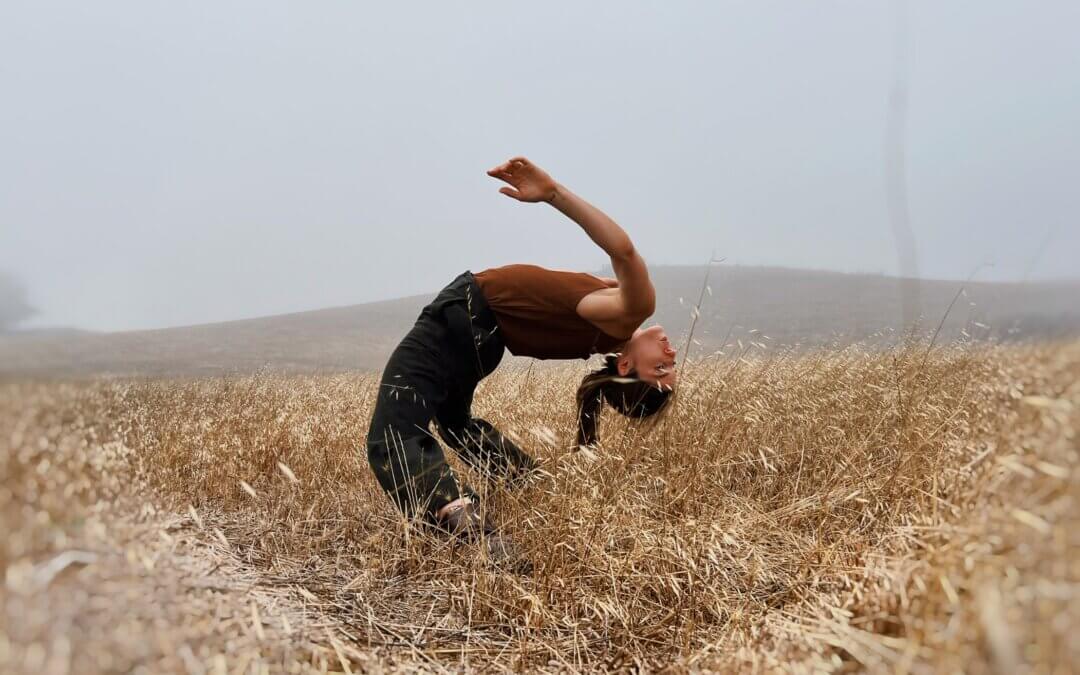
By Anna Gichan, BFA ’17
BFA dance alum Anna Gichan is a legally deaf dance artist who has devoted part of her Arts & Social Justice Residency at Brooklyn College and BAX/Brooklyn to advocating for equity, onstage and off. Find this first-person account from Gichan, along with features on cross-disciplinary course “Interplay,” the 20th anniversary of Rutgers Conservatory at Shakespeare’s Globe, and much more in the 2023 issue of MGSA Magazine.
As someone who is severely-to-profoundly Deaf, I access sound differently from the hearing majority. The tools I use to communicate include lip reading, body language, written notes and ASL interpreters when available.
When I moved to New York City after graduating from Mason Gross in 2017, I met leaders in the disability arts scene proudly owning their Disability, and I began to wonder for myself, What the world would look like if everyone was Deaf, shifting the narrative from being “a problem” that needed to be fixed through devices into embracing deafness as a strength.
With the Covid-19 pandemic, the invisibility of Deafness became more apparent because the ability to “blend in” through lip-reading no longer worked through masking. This prompted some more questions: What does communication mean? How do I wish hearing people understood how I experience sound—especially in a dance setting?
I applied for the two-year CUNY Dance Initiative Social Justice Residency (CDI) in partnership with Brooklyn College and Brooklyn Arts Exchange with two goals: to develop my contemporary dance voice through teaching movement workshops; and to build a dance piece centered on my upbringing, which includes my Deaf journey with speech therapy, ASL, and observations of language and communication.
“I began to wonder for myself, What the world would look like if everyone was Deaf, shifting the narrative from being “a problem” that needed to be fixed… to embracing deafness as a strength.”
Recently, I applied for the opportunity to share my work at a theater within a curated group and requested an ASL interpreter three weeks prior to our first group meeting. But instead of an interpreter, they offered me a microphone. The disappointment that I experience from the denial of communication needs is woven into much of my work at CDI Brooklyn College, culminating in a work set to premiere in December.
In January, Jeff Friedman of the Mason Gross Dance Department invited me to return for a three-week Integration Lab for disabled choreographers, with the opportunity to rehearse and to present work at Loree Theater and have our access needs met. During tech and the show, interpreters were present, and people were using notes apps to communicate with me. What a reassuring experience it was being able to solely focus on the work rather than worry about the communication process. I hope for a future where performing-arts spaces have an access budget to hire interpreters. I hope for a world where more people are educated in various communication styles without fear of silent practices i.e., ASL and written notes. With access work integrated into art, science, public spaces, healthcare, we create environments for people to be fully engaged.
Photo Credit: CONCEPT.04

